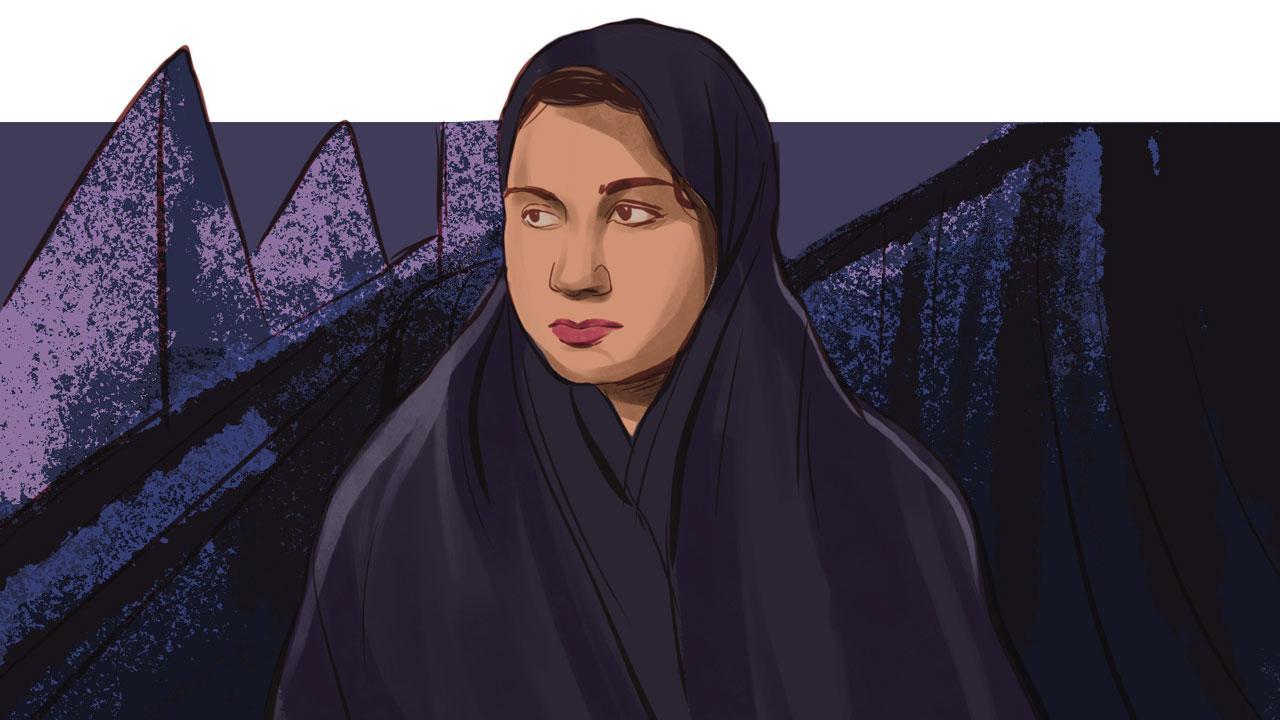At the Film Studies Dept at Jadavpur University, Singh was exposed to Iranian cinema, and Iranian poetry, including that of Forough Farrokhzad

Illustration/Uday Mohite
![]() Moderating the Q/A for Sreemoyee Singh’s debut feature Be Kucheye Khoshbakht, And Towards Happy Alleys, that was selected in the Berlin International Film Festival’s Panorama section, was the most beautiful gift to celebrate my #25YearsWithBerlinale. Shot in Iran and made in Farsi, the film earned a five-minute-long standing ovation; many were in tears in the audience, and when Sreemoyee Singh sang a beautiful Farsi song, Soltane Ghalbha (The King of Hearts) at the end, many Iranians in the audience sang it with her, moist-eyed. A PhD from Jadavpur University, Kolkata, Singh has made a personal documentary over six years in the pursuit of learning the Farsi language, Iranian cinema and poetry, and the film soon moves seamlessly to the heart of the Iranian revolution.
Moderating the Q/A for Sreemoyee Singh’s debut feature Be Kucheye Khoshbakht, And Towards Happy Alleys, that was selected in the Berlin International Film Festival’s Panorama section, was the most beautiful gift to celebrate my #25YearsWithBerlinale. Shot in Iran and made in Farsi, the film earned a five-minute-long standing ovation; many were in tears in the audience, and when Sreemoyee Singh sang a beautiful Farsi song, Soltane Ghalbha (The King of Hearts) at the end, many Iranians in the audience sang it with her, moist-eyed. A PhD from Jadavpur University, Kolkata, Singh has made a personal documentary over six years in the pursuit of learning the Farsi language, Iranian cinema and poetry, and the film soon moves seamlessly to the heart of the Iranian revolution.
ADVERTISEMENT
At the Film Studies Dept at Jadavpur University, Singh was exposed to Iranian cinema, and Iranian poetry, including that of Forough Farrokhzad. Dissatisfied with the English translation, she decided to learn Farsi at Tehran University, so she could better appreciate Farrokhzad’s poetry in the original. Her PhD is on The Exiled Filmmaker in Post-Revolution Iran. She interviewed a number of Iranians, including filmmakers in exile such as Mohsen Makhmalbaf and Bahman Ghobadi, and others including Jafar Panahi (who is in the film) and Mohammad Rasoulof, who are in internal exile. Panahi drives Singh around in his car, as she films him (shades of Panahi’s Taxi), and they pass the Evin prison from where Panahi was recently released, along with Rasoulof, while hundreds others languish in jail on flimsy charges.
There’s a deeply moving moment when Panahi talks of how oppressive it is that the regime has banned him from making films (although he has miraculously continued to make them), and confides to Singh about the time he considered suicide, and walked deep into the sea, “but the waves kept rebuffing me,” he says. “I survived, and it made me even more determined to keep making films.”
Along with the oppressed filmmakers, Singh constantly meets women who are suppressed in various ways—they must wear the chador or hijab, they cannot sing solo in public (that’s why they keep asking Singh to sing Farsi songs), and worse. Her interviewees include human rights activist Nasrin Sotoudeh, who has also been sentenced to 38 years in prison for defending women opposing compulsory veiling laws; Jinous Nazokkar, author and academic, and actor Farhad Kheradmand. She also meets Aida Mohammadkhani and Mina Mohammadkhani, who had acted in Panahi’s films The White Balloon and The Mirror respectively, as child actors. Aida, who had wept in The White Balloon as a child actor, is now challenged to do the same on cue as an adult. Singh is filming the scene from a discreet distance, but Panahi takes her camera and does a close-up of the actress’ tears: it’s that kind of informal filmmaking that also acquires an urgency. In a delightful sequence, Singh sings a Farsi love song in a school room full of girl students: the students have been forbidden to sing, but they join her in song, in a spontaneous show of delight and defiance.
The director’s approach is one of openness, personal enquiry and empathy; as an Indian woman with a shared history and culture, and especially one who speaks Farsi, she speaks of having an ‘Eastern gaze;’ she has an informed outsider position but many more doors open to her because of this. The film meanders in some places—the editing is by Joydip Das, Jabeen Merchant and Pradyatan Bera—and you wish it was more up to date on the current Iranian revolution for human rights, but rather than a classical documentary, the film chooses the conspiratorial, first-person tone of a friend and confidant, and appeals because of this. Singh is herself in the film—beautiful, sensuous, empathetic, open to engagement, and she even shares with us a poem inspired by a photograph she took of a Iranian woman in a chador by a river bridge. Singh is the director, screenwriter, cinematographer, sound recordist and producer. Majdy’s music and Anirban Borthakur’s sound design enhance the film. The Executive Producers include Noopur Sinha, Hussain Currimbhoy and Orly Ravid. The women crew include Singh as the director, screenwriter, cinematographer, sound recordist and producer and executive producer Noopur Sinha. Sinha says she “never felt far away” in Iran because of the socio-political situation and patriarchy in India as well. It gives you an idea how Indian cinema changes for the better when you give a woman a voice in film.
Meenakshi Shedde is India and South Asia Delegate to the Berlin International Film Festival, National Award-winning critic, curator to festivals worldwide and journalist.
Reach her at meenakshi.shedde@mid-day.com
 Subscribe today by clicking the link and stay updated with the latest news!" Click here!
Subscribe today by clicking the link and stay updated with the latest news!" Click here!








